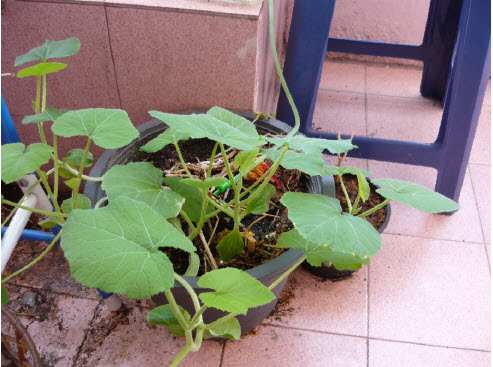Cool, crisp cucumbers from the garden are perfect in summer salads or on their own with sour cream and fresh dill.
Types of Cucumbers
Standard cucumbers are often called slicers. Slicers are usually 6-9 inches (15-23 cm) long, but may be as short as four (10 cm) and as long as 14 (36 cm) inches. "Burpless" varieties have been bred to avoid a common side effect.
Pickling cukes are usually shorter (6 inches or 15 cm) and "blockier" than slicing cucumbers, and have a bumpy or spiny skin. They're also crunchier, which is why they're best for pickling. Some cucumber varieties are bred to be good for both slicing and pickling.
Gherkins are actually the fruits of the 'West Indian Gherkin' (Cucumis anguria), a close relative of the cucumber, which produces 1-3 inch long (25-76 mm) spiny fruits. Gherkins are grown just like cucumbers. Many pickles called "gherkins", however, are made from regular pickling varieties.
Round, yellow "lemon cucumbers" are about the size of a tennis ball. Lemon cucumbers are sweet and don't contain as much of the chemical that can make some cucumbers bitter. They also make colourful pickles.
English hothouse (also called Dutch or European) cucumbers have a ridged or smooth skin, virtually no seeds, and do not require peeling. As the name implies, they are usually grown in greenhouses. Japanese cucumbers, which are also long, slender, thin-skinned, and virtually seedless, are a good substitute.
Armenian cucumbers (Cucumis melo) are long and light green with thin, ridged skins that also don't need peeling. Asian cucumbers come in a wide variety of lengths, colours, and flavours.
Planted in the pot picture

